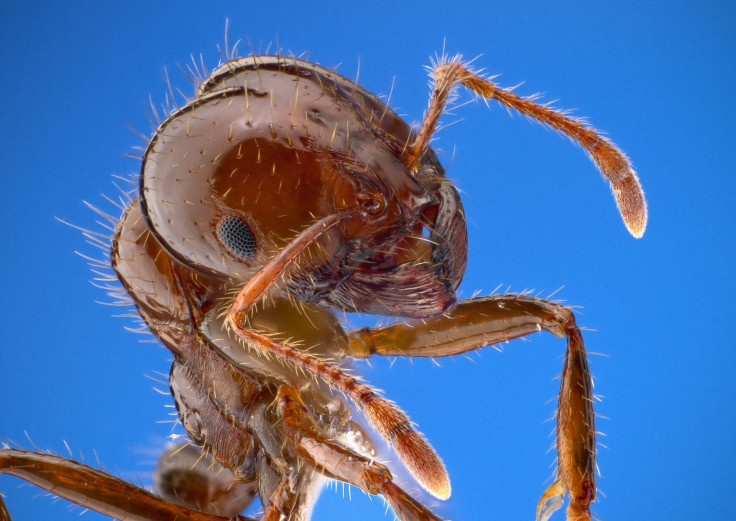Fire Ants Psoriasis Treatment: Venom May Relieve Painful Skin Disease

Fire ants are notorious for their painful sting but the insects might also help humans — scientists say their venom could be used to treat the skin disease psoriasis.
A group of researchers used the toxic parts of fire ant venom, compounds called solenopsins, to create treatments that will lower inflammation and help stop the skin from thickening, both of which are symptoms of the autoimmune disease psoriasis. The medicine derived from fire ant venom worked in mice and have potential to replace the topical steroid treatments humans currently use.
Emory University explained that those steroids have side effects like thinning the skin too much and making it bruise easily. But the mice that were treated with the new mixture, whose active ingredient works similarly to a solenopsin, saw their skin thickness decrease by about a third and had only about half as many immune cells “infiltrating the skin,” thus reducing inflammation.
The university said immune cells treated with new compounds sent out fewer inflammatory signals and more anti-inflammatory ones.
Fire ants have been in the news recently for much less positive reasons. When Hurricane Harvey blew through Houston in late August, the floodwaters carried huge masses of fire ants, which are capable of clinging together in such a shape that they do not drown and can float in that way for long periods.
Pro tip: Don't touch the floating fire ant colonies. They will ruin your day. #Harvey pic.twitter.com/uwJd0rA7qB
But between 2.5 million and 6 million people in the United States have psoriasis, so an improved treatment could potentially benefit a lot of patients, and therefore so could the fire ants.
Some of the symptoms of psoriasis include irritate skin patches that are covered with silver-looking scales; swollen joints; and dry skin that may crack and bleed. Plaque psoriasis, marked by those thick scales, is the most common form of the skin condition and can affect any place on the body, even inside the mouth and on the genitals.
The fire ant-derived treatment imitates molecules that naturally occur in skin called ceramides, which are crucial for skin function because they support its barrier function, according to the researchers’ study in the journal Scientific Reports. But unlike natural ceramides, the compounds in the treatment do not breaks down into another molecule, known as sphingosine-1-phosphate or S1P, that promotes inflammation.
While other skin creams may soothe areas affected by psoriasis, “they are not sufficient for restoration of the barrier,” lead study author Dr. Jack Arbiser said in the Emory statement. But creams containing the solenopsin-derived treatment is “contributing to full restoration of the barrier function in the skin.”
There are many examples in medicine of poisonous substances or irritants being used as treatment for various illnesses. Heart disease is one strong example — different heart medications have been derived from snake venom, poisonous plants and even nitroglycerin, the explosive material found in dynamite.
In the case of solenopsins, Emory explained that previous research has shown them to have potential as anticancer agents as well.
© Copyright IBTimes 2024. All rights reserved.





















